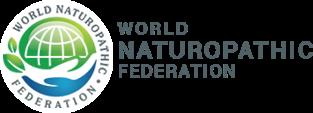WNF Guide for Supervised Clinical Practice



Acknowledgements
The WNF Guide for Supervised Clinical Practice was compiled based on the WNF Naturopathic Educational Program Guide (2022)[1] and the Naturopathic Education Accreditation Standards Comparison (2023)[2] and consultations with the WNF Educational Committee.
This initiative was led by the WNF Educational Committee co-chaired by Tina Hausser, Heilpraktiker, Naturopath (Spain) and Dr. Madeleine (Abena) Tuson-Turner, ND (USA). The WNF Educational Committee members include:
Dr. Stephen Farrugia, ND (South Africa)
Benjamin Dupuis, Naturopath (France)
Suhas Vinchurkar, B.N.Y.S., Ph.D. (India)
Jackie Arbuckle, Naturopath (Australia)
Dr. Amie Steel, PhD, ND (Australia)
JoAnn Yánez, ND, MPH, CAE (USA)
Dr. Nick De Groot, ND (Canada)
Daniel Kieffer, Naturopath (France)
Natalie Cook, Naturopath (Australia)
Silvia Polesello, Naturopath (Italy)
Marianna Pontini, Naturopath (Italy)
Julien Henzelin, Naturopathe MTE (Switzerland)
Isabel Yost, Naturópata (Uruguay)
Ex Officio – WNF CEO – Dr. Iva Lloyd, ND (Canada)
T his document was reviewed and approved by the WNF Educational Committee and was approved by the WNF Executive in November 2024.
© World Naturopathic Federation November 2024
All rights reserved. Publications of the World Naturopathic Federation (WNF) can be obtained from their website at www.worldnaturopathicfederation.org . Please address requests for the permission to reproduce or translate WNF publications – whether for sale or for non-commercial distribution – to info@worldnaturopathicfederation.org
All reasonable precautions have been taken by the WNF to verify the information in this report. However, the published material is being distributed without warranty of any kind, either expressed or implied. The responsibility for the interpretation and use of the material lies with the reader. In no event shall the WNF be liable for damages arising from its use.
Printed in Canada.


Naturopathic Education Background
The role of the World Naturopathic Federation (WNF) is to promote the highest in naturopathic educational standards globally. This is accomplished by provid ing guidance documents on naturopathic educational standards and guidelines for specific aspects of naturopathic curriculum. Please note that the WNF does not approve or accredit naturopathic courses and /or programs.
There are two recognized naturopathic educational programs.
1. Doctorate-level training programs (4,000+ hours), which represents more than 50% of naturopathic educational programs that currently exist.
2. Practitioner-level training programs (2,500 hours)
As outlined in the WNF Naturopathic Educational Program Guide [1], published in 2022, naturopathic programs encompass six curriculum aspects in roughly the following breakdown by hours for each of the two programs.
Please note that the hours provided are an estimate and that different naturopathic programs will vary slightly. Also, the 4000+ hour programs range from 4000 to 4500+ hours. For this guide, we have based the hours on a 4200-hour program.
Aim of the Supervised Clinical Practice Guide
The aim of this guide for supervised clinical practice is to provide an outline for 2500-hour naturopathic programs and those naturopathic programs upgrading to 2500-hours as it relates to supervised clinical practice.
Supervised clinical practice is an integral part of the naturopathic curriculum as it serves many essential roles including students learning accurate patient history

documentation, performing thorough physical exams, delivering well-organized oral case presentations with differential evaluations, and it is where naturopathic students apply their theoretical knowledge of naturopathic care under observation from practicing naturopathic doctors or naturopaths.
Supervised clinical practice is often facilitated through a teaching clinic affiliated with a naturopathic educational institution but is can also be done through community clinics and through the clinics of practicing naturopaths / naturopathic doctors.
As per the WNF Naturopathic Educational Program Guide [1], 2500-hour naturopathic programs generally include about 500-hours of supervised face-to-face clinical practice.
Purpose Of This Guide
The purpose of this guide is as follows:
1. Support enhanced naturopathic educational standards globally.
2. Facilitate collaboration between naturopathic educational institutions.
3. Guide the efficient implementation of supervised clinical practice into 2500-hour naturopathic educational programs and for those naturopathic educational institutions that are looking to enhance and/or formalize their supervised clinical practice component of their naturopathic curriculum.
Objectives of Supervised Clinical Practice
The objectives of supervised clinical practice include [3,4,5]
● A clinical experience that provides students with the opportunities to develop the clinical knowledge, skills and critical judgment necessary for safe and effective practice as a primary care naturopathic doctor / naturopath, including patient counseling on health promotion and disease prevention, patient assessment, diagnosis, treatment, prognosis and management, follow ups and referral as appropriate.
● Develop competence in applying naturopathic principles, philosophy and clinical theory to clinical practice.
● Practice patient-centred care, safely and effectively in a supervised environment.

● Opportunities to demonstrate competence in the full range of naturopathic therapies.
● Opportunities to treat patients of all ages, to treat a wide variety of conditions and diseases, and to develop case management skills.
● Develop the knowledge, skills, attitudes and behaviors necessary to establish effective professional relationships with patients, faculty, colleagues, other health care practitioners and the public.
● Opportunities to develop cultural competence in such areas as human sexuality and gender sensitivity, as well as in cross-cultural situations and to develop an understanding of medical ethics and the medical consequences of common societal and environmental problems.
● Group forums for discussion among clinical faculty and students on a variety of clinical subjects and case analyses, with the inclusion of naturopathic principles, philosophy and clinical theory as relevant to the discussion topic.
● Opportunity to interact with other health professionals to support their understanding of multi-professional health care environments, facilitate intra-professional learning for collaborative practice and develop an understanding of referral networks and a team approach to care.
● Develop a thorough knowledge and the necessary skills of charting and coding practices and patient record maintenance, including applicable jurisdictional legal requirements (e.g., electronic communications and telemedicine), naturopathic practice management (e.g., attracting and retaining patients, time management, charging and collecting fees, etc.).
Requirements and Tasks for Students and Supervisors
This section outlines the requirements for students, supervisors and clinics as it relates to supervised clinical practice. [3,5]
Student’s Responsibilities
● Active participation by the students is expected in the group mentorship to deepen knowledge that is already known and to promote practical transfer.
● A naturopathic student must have successfully completed the following learning modules of a naturopathic educational program prior to participating in supervised clinical practice:
o Naturopathic history, philosophies, principles, and theories
o Naturopathic medical knowledge

o Naturopathic modalities, practice treatments or equivalent modules according to national qualification frameworks.
● Students must also be able to demonstrate that they can:
o Interact professionally with patients and other providers.
o T rack progress towards mentorship objectives and document their accomplishments.
o Discuss, reflect on and constructively address specific problems together with the mentor.
o Develop self- determined and self-responsible learning objectives to safely transition to practice in various setting.
o Complete report with the supervisor of realized hours and component.
o Telemedicine/virtual competencies vs in-person competencies.
Supervisor’s Responsibilities
The qualifications and qualities of supervisors for naturopathic supervised clinical practice include [3,4,5]:
● Meet the highest level of naturopathic training and must meet the national requirements of academic qualification for clinical supervisors in their jurisdiction and
o a minimum of 5 years clinical experience
o a minimum of 2 years of educational experience
● Be in good standing with their regulatory board and/or naturopathic professional association.
● Show clinical experience that integrates naturopathic principles, philosophy, clinical theory and clinical practice into every clinical interaction.
● T raining in supervision/mentoring skills.
● Supervisors will also:
o maintain a formal agreement or arrangement with the naturopathic educational institution to act in a supervisor/mentor role
o maintain professional indemnity insurance that includes /supervision of students in clinic
● Complete a checklist in coordination with the student (hours and competencies).

Student-to-Supervisor Ratio
It is recommended to specify the naturopathic student number per supervisor appropriate to the clinic size and patient safety and to ensure adequate time for oneon-one discussion between the supervisor and the student(s). Examples in comparison [2]:
8:1(ARONAH); 6:1(CNME); 13:1 (OdA AM)
Program Requirements
The supervised clinical program must ensure the following: [3,5]
● The minimum patient numbers established by the program must be demonstrably sufficient to ensure student acquisition of required competencies.
● The program must maintain clinical records (including, where appropriate, electronic records) of patients that are accurate, secured, backed up, complete, and kept confidential in accordance with applicable legal requirements.
● Clinical charts must be signed by the student and the supervising clinician.
● Patient cases (anamnesis, case analysis/assessment, therapy planning, therapy implementation, Care), communication and interaction skills, conflict management, therapeutic network and interdisciplinary collaboration.
● Supervised clinical practice must be primarily face-to-face where the supervisor can observe the student and student-patient interaction in-person.
● Telehealth competencies may be accommodated, if applicable, but can not account for more that 20% of the program.
Student Competencies
The following outlines the competencies that students must demonstrate for effective completion of supervised clinical practice: [3,4,5]
● Gather a Focused History

○ The student must demonstrate that they can competently elicit and document an accurate and appropriate history.
○ The student must gather this history in a prioritized, organized manner with respect for the patient.
○ The history should be tailored to the clinical situation and specific patient encounter, taking into consideration cultural and other factors that may influence the patient’s description of symptoms.
● Complete a Pertinent Physical Examination
○ The student must demonstrate that they can competently perform and document a clinically relevant, focused physical exam
○ The exam must be pertinent to the setting and purpose of the patient visit in logical and fluid sequence, without missing required elements or performing extraneous examinations.
○ The student should demonstrate patient-centered examination techniques that reflect respect for patient privacy, comfort, and safety (e.g., explaining physical exam maneuvers, telling the patient what one is doing at each step, keeping patients covered dur ing the examination).
● Prioritize a Differential Diagnosis and Provide an Oral Presentation of a Clinical Encounter
○ The student must demonstrate that they can competently provide an accurate, concise, and well-organized oral case presentation and prioritized differential diagnosis
○ The presentation must include pertinent elements of the medical history, physical exam and diagnostic evaluation, and provide justification for a prioritized differential diagnosis.
○ The student must show that they have synthesized essential information from the previous records, history, physical exam, and initial diagnostic evaluations.
○ The student must explain the clinical reasoning that led to the working diagnosis.
○ The student must adjust the oral presentation to meet the needs of the receiver of the information.
○ Assure closed-loop communication between the presenter and receiver of the information to ensure that both parties have a shared understanding of the patient’s condition and needs.
● Recommend and Interpret Appropriate Evaluation Tests

○ The student must demonstrate that they can competently select and interpret appropriate evaluation tests in consideration of the patient’s condition
○ The student must consider patient preferences in making recommendations.
○ The student must provide a rationale for the decision to order the test.
○ The student must incorporate cost awareness and principles of costeffectiveness and pre-test/post-test probability in developing evaluation plans.
○ The student must interpret the results of the evaluation tests ordered and identify and understand the implications and urgency of an abnormal result.
● Identify Necessity for an External Referral and Document Appropriately
○ The student must demonstrate that they can identify when external specialty referral is required when the patient’s condition is beyond the realm of their specific training in primary care.
● Formulate a treatment plan including appropriate modalities
○ The student must ensure that the patient understands the reason for the recommendation and is aware of potential out-of-pocket costs.
○ Students must demonstrate the ability to prescribe naturopathic modalities commonly used in their jurisdiction safely and accurately. For example:
○ Applied Nutrition: The student must demonstrate the ability to prescribe an individualized dietary/nutritional plan for a patient according to the patient’s condition and constitution and taking into consideration cultural and other factors that may influence the patient’s dietary choices.
○ Clinical Nutrition: The student must demonstrate the ability to prescribe vitamin, mineral, combination, or other nutritional supplements safely and accurately.
○ Botanical Medicine: The student must demonstrate the ability to formulate and prescribe botanical medications safely and accurately.
○ Lifestyle counselling: The student must demonstrate the ability to accurately recommend a lifestyle that is beneficial for the patients’ condition and constitution.

○ Other modalities: Hydrotherapy, naturopathic bodywork, acupuncture and homeopathic prescription: the student must demonstrate the ability to apply naturopathic treatments and prescriptions safely and accurately, according to national jurisdictions
○ Follow up with patients: The student must demonstrate the ability to accompany and document the patient's treatment path, classify and evaluate the results accordingly and show evidence of clinical effect The student must demonstrate to have seen different case histories, physical exams, case presentations, evaluations completed in different condition categories.
Clinic Requirements
The focus of this Guide is to support the implementation and enhancement of clinical supervision for 2500-hour naturopathic educational programs. Supervised clinical practice in naturopathic education can be provided in naturopathic clinics associated with the naturopathic educational institution, in community clinics associated with the naturopathic educational institution and by individual health care clinics providing supervised clinical training.
When naturopathic educational programs are established to the point of providing a naturopathic clinic within the institution itself, we recommend that they follow the guidelines outlined in one of the established naturopathic accreditation standards as outlined in the Naturopathic Education Accreditation Standards Comparison [2]. The focus of this Guide is on the use of community clinics and individual health care clinics to support supervised clinical practice.
Guidelines for Community Clinics and Individual Health Care Clinics
Community Clinics and individual health care clinics can facilitate supervised clinical training based on the following: [3, 5]
● A written affiliation agreement must be in place whenever an affiliated clinical training site is not under the direct administration of the program. The agreement must clearly state the educational goals for the training and the role of the student clinic ians. The clinic might apply for supervised clinical practice accepted by the institution.

● The clinic must be a legally registered clinic within regional guidelines and must meet state and national safety requirements.
● The clinic must promote ethical and evidence-based naturopathic practice grounded in naturopathic philosophy.
● Maintain sufficient administrative staffing in the clinic(s) to meet the needs of the clinical training component and effectively operate the clinic.
● The clinic must maintain sufficient patient volume for the number of student clinicians.
● Ensure that patient-care rooms, clinical laboratories and other clinical facilities are appropriately equipped to enable students to practice the full range of naturopathic modalities.
References
1. WNF Naturopathic Educational Program Guide
2. https://worldnaturopathicfederation.org/wpcontent/uploads/2023/05/Naturopathic-education-comparison-table_final.pdf
3. https://cnme.org/wp-content/uploads/2024/01/CNME-Handbook-of-AccreditationJanuary-2024-edition.pdf
4. http://www.aronah.org/wp-content/uploads/DRAFT_Naturopathic-EducationAccreditation- Standards_2021_V3.pdf
5. https://odaam.ch/fileadmin/sites/oda/files/hoehere_fachpruefung/hfp/15.4_M7_Richtlinien_ M7_220428A_DE.pdf
Bibliography
AANMC Competencies: https://aanmc.org/wpcontent/uploads/2023/01/AANMC_Core_Competencies_1.4.23.pdf
Clinical Proficiency Objective Requirements – College of Naturopathic Medicine National University of Natural Medicine 6/23/2016
